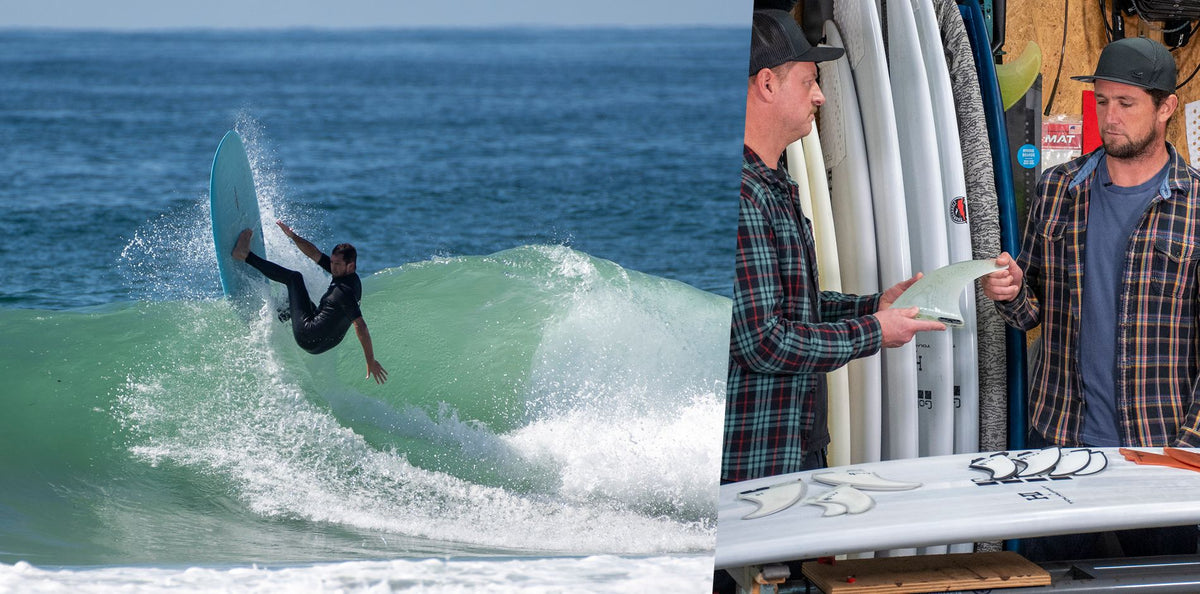Your Cart is Empty

FCS thruster and quad sets are categorised by size. Each size category has an optimum weight range that can be used as a guide when choosing a fin:
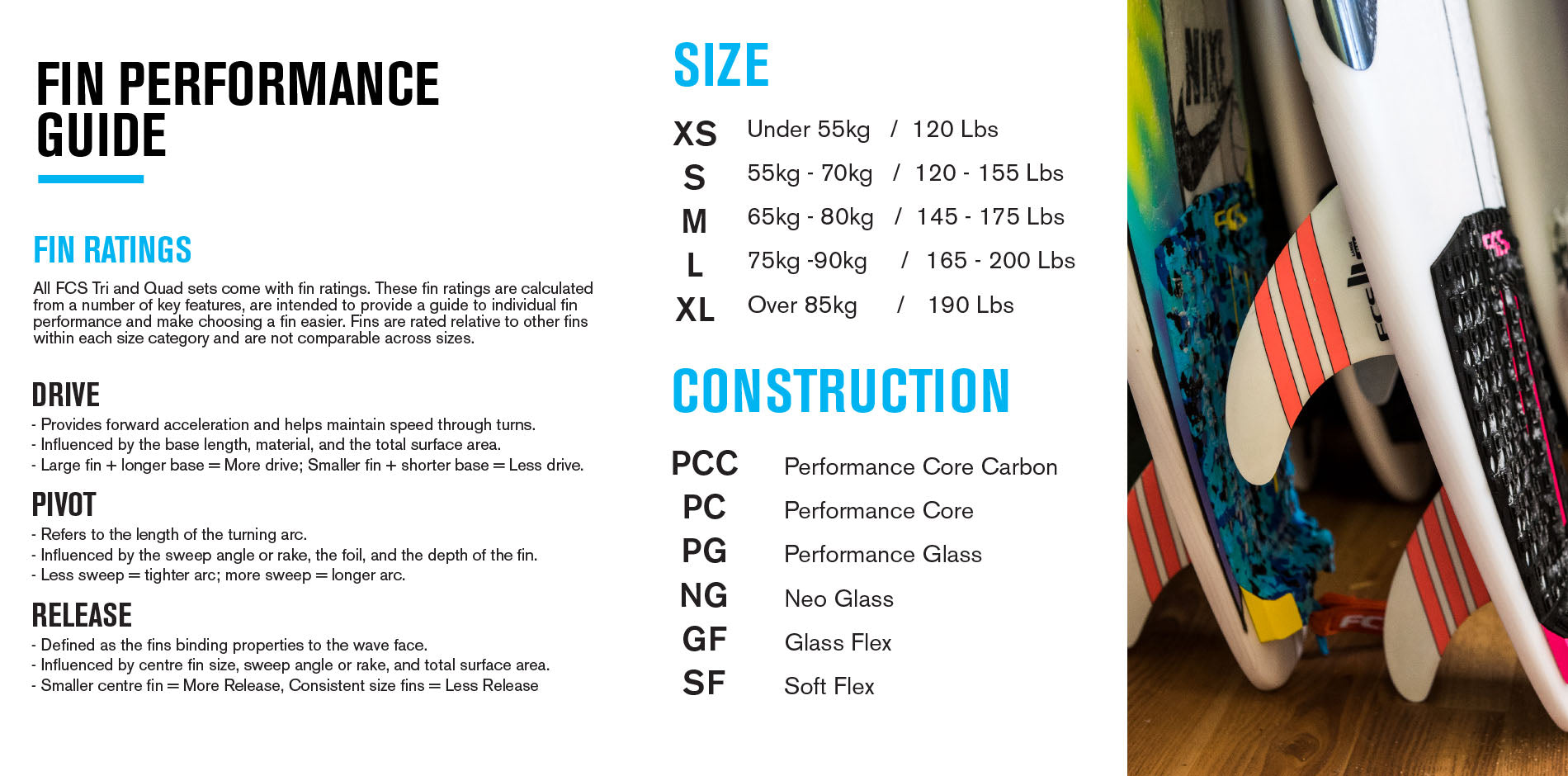
So you’ve decided on the fin template that’s right for you… But what about the fin construction? This video explains the constructions currently used in the FCS fin range so you can make an educated decision going into your next fin purchase.
Performance Glass material characteristics and flex pattern are identical to traditional fibreglass fins offering a stiff base with subtle responsive tip flex, amazing aesthetics and proven durability. PG fins are the perfect transition fin for surfers moving from fixed fins to the convenience, accuracy and performance of FCS.
Performance Core construction with hand laid carbon fiber designed to deliver controlled flex and enhanced base stiffness.
Fins with AirCore Technology feature a pressed polyurethane foam core that mimics the geometric foil of the fin. AirCore technology reduces the amount of fiberglass required in the RTM moulding process making it much lighter while allowing total manipulation of the flex.
Performance Core material and construction is designed to deliver the feeling of a traditional fibreglass fin with the added performance of reduced weight. The RTM (Resin Transfer Moulding) process produces a lightweight fin with remarkable flex, a smooth feel and an impressive aesthetic.
Neo Carbon fins are precision molded using long strand carbon and the highest-grade European resin. These fins are super light with a firm ‘spring loaded’ flex. Neo Carbon fins actually help surfers generate speed in smaller conditions via the ‘whipping effect’ that propels you from one turn into the next.
Lightweight, moulded fiberglass construction delivering pro standard performance. The high fiberglass content makes these fins stiff and responsive, and the engineered foils provide a consistent feel in a range of different conditions.
Glass Flex has been formulated to replicate the flex and memory properties of hand layed fibreglass. It's advantages over other composite fin materials include stiffness, a more positive flex pattern (nice tip flex, little base flex) and remarkable flex memory. The precision of the injection moulding process ensures the highest accuracy in geometry in each fin produced.
Soft Flex fins are molded using highly flexible urethane. For this reason they’re safe, mostly used with softboards, and are ideal for beginners as they gain confidence in the water.
So which construction is right for you?
If you’re in the ‘Advance +’ category, you like to push hard through turns, and want a fin that offers immediate response, then our stiffest and most responsive material Performance Glass (PG), or Performance Core Carbon (PCC) construction is right for you.
‘Intermediate +’ surfers will benefit from Performance Core (PC) construction which offers a consistent feel in a range of conditions, and is more forgiving to help you maintain speed as you execute turns.
NEO Glass and Neo Carbon is a great option for ‘Novice +’ and also ‘Intermediate +’ surfers looking for a more affordable option, but don’t necessarily want to sacrifice on performance.
Glass Flex (GF) material is perfectly suited to 'Novice +' surfers looking for fin material than can help then comfortably progress with their surfing.Soft Flex is ideal for children and 'Beginners' as they gain confidence in the water.
Use the new FCS II Fin Finder to find the fins best suited to your surfing.
Understanding FCS Fin Characteristics
All FCS fins are classified by the following characteristics; Base, Depth, Area and Sweep.
Understanding how these fin characteristics can change the performance of your surfboard is an important consideration when working out which FCS fins are best for you. Each of the following fin characteristics are clearly listed on each each fin page, allowing you to evaluate the impact that a fin design would have on your surfing.
BASE
Base is the length between the leading and trailing edge where the fin meets the board. Base is primarily linked to drive. Fins with a longer base will offer substantially more drive and acceleration.
DEPTH
Depth is the distance the fin penetrates into the water. Depth directly relates to hold. The greater the depth the more hold, the shorter the depth the more a board will slide and release.
SWEEP
Sweep is the angle measuring how far the outline of the fin is curved backwards; also referred to as rake. Sweep has a direct influence on pivot. Fins with more sweep produce a longer turning arc, less sweep offers a tighter turning arc.
AREA
Area is the total surface area of the fin.
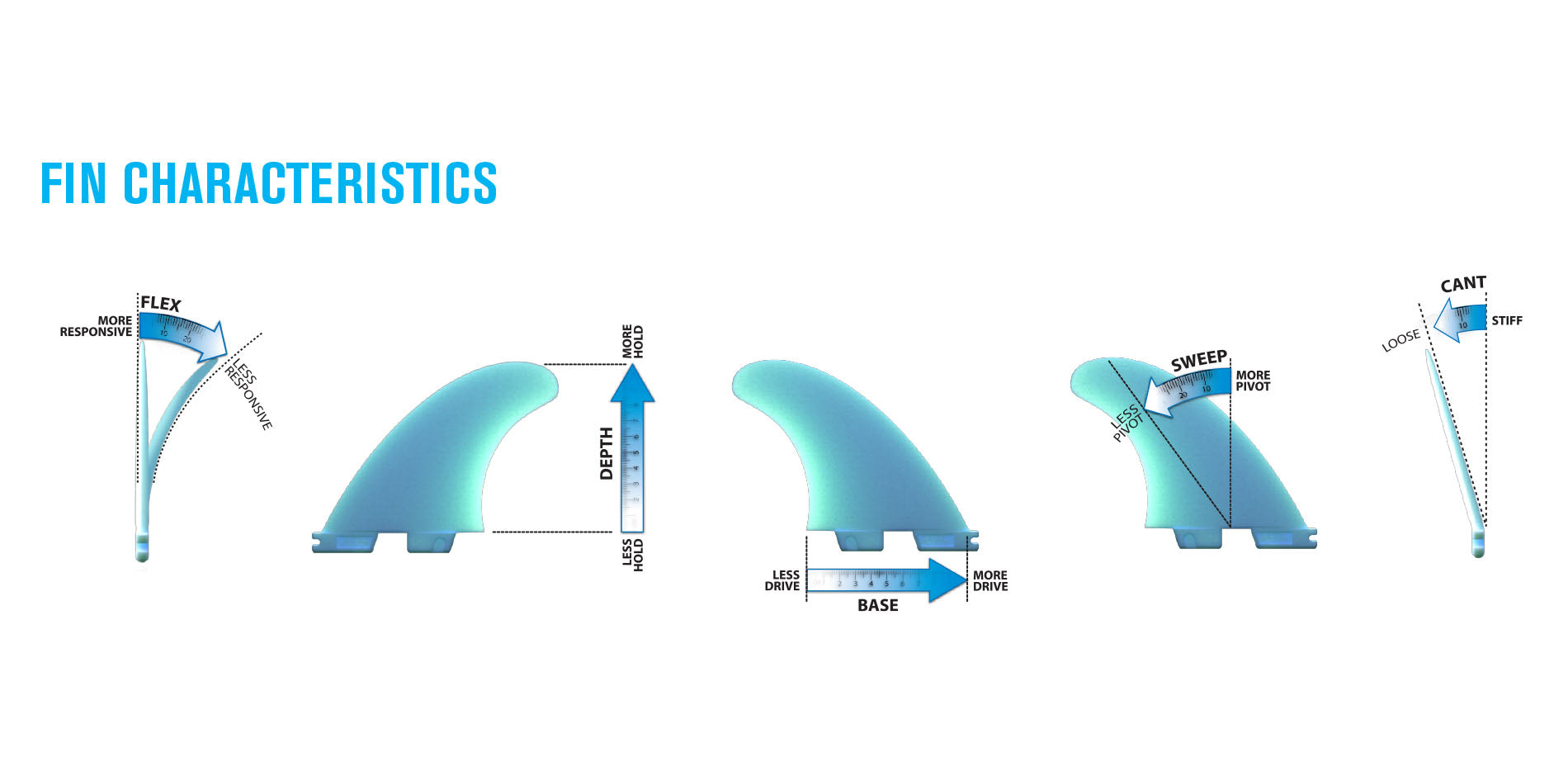
Foils have a major influence on the overall performance of a fin. Foils essentially determine how the water flows across the surface of the fin and directly affect properties such as speed, hold and release.
Inside Foil
- Rounded leading edge, concave inside face.
- Inside foil increases efficient water flow.
- Adds lift and hold while reducing drag.
- Helps surfers maintain speed through turns.
Flat Foil- Even combination of drive, pivot and hold.
- Fast directional changes.
- Preferred by advanced and pro surfers.
50/50 Foil- Symmetrical foil used on centre fins and sometimes quad rears.
- Even water flow creates stability and control.

80/20 + 70/30 Foil
- Asymmetrical foil typically used for quad rear fins. - Allows for fast turning sensitivity while still providing stability and control.
It's really all up to experimentation and seeing what works best for your surfing style. Try a few different combinations, see how your board behaves differently during each surf, and most importantly ....have fun!
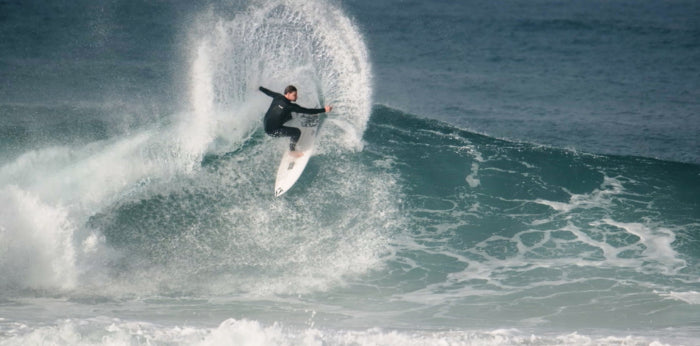
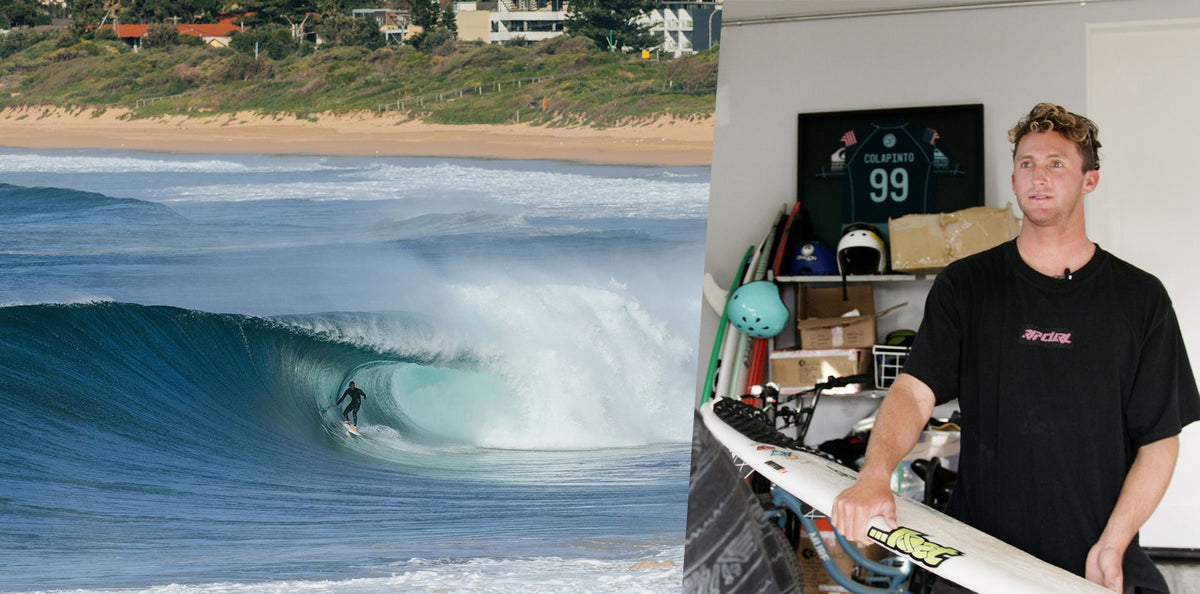
In episode five of Beneath The Surface, we catch up with one of the world's most promising and exciting surfers Crosby Colapinto.
Cros gives us his insights into his favourite fins and why he's now jazzed on riding quads.
